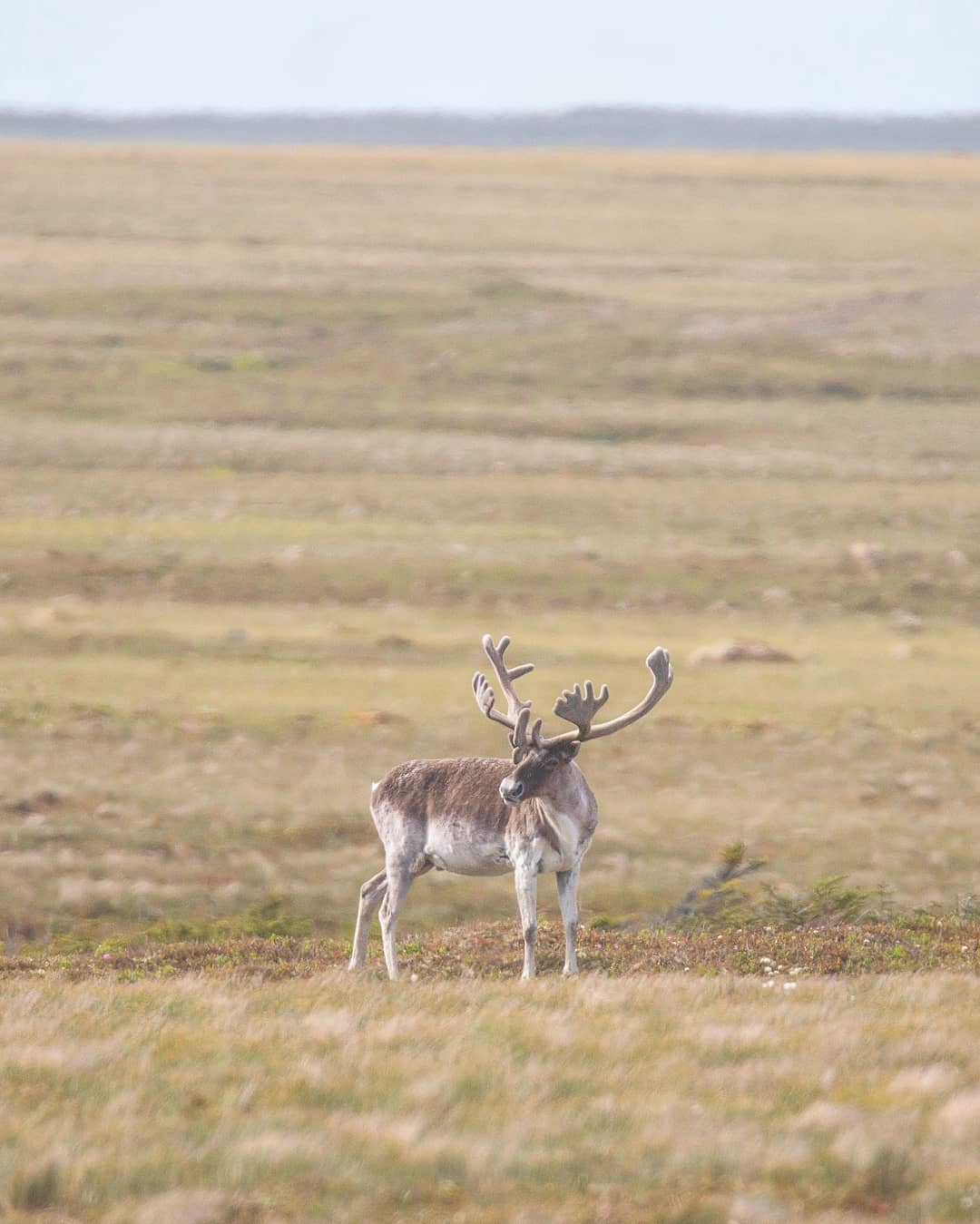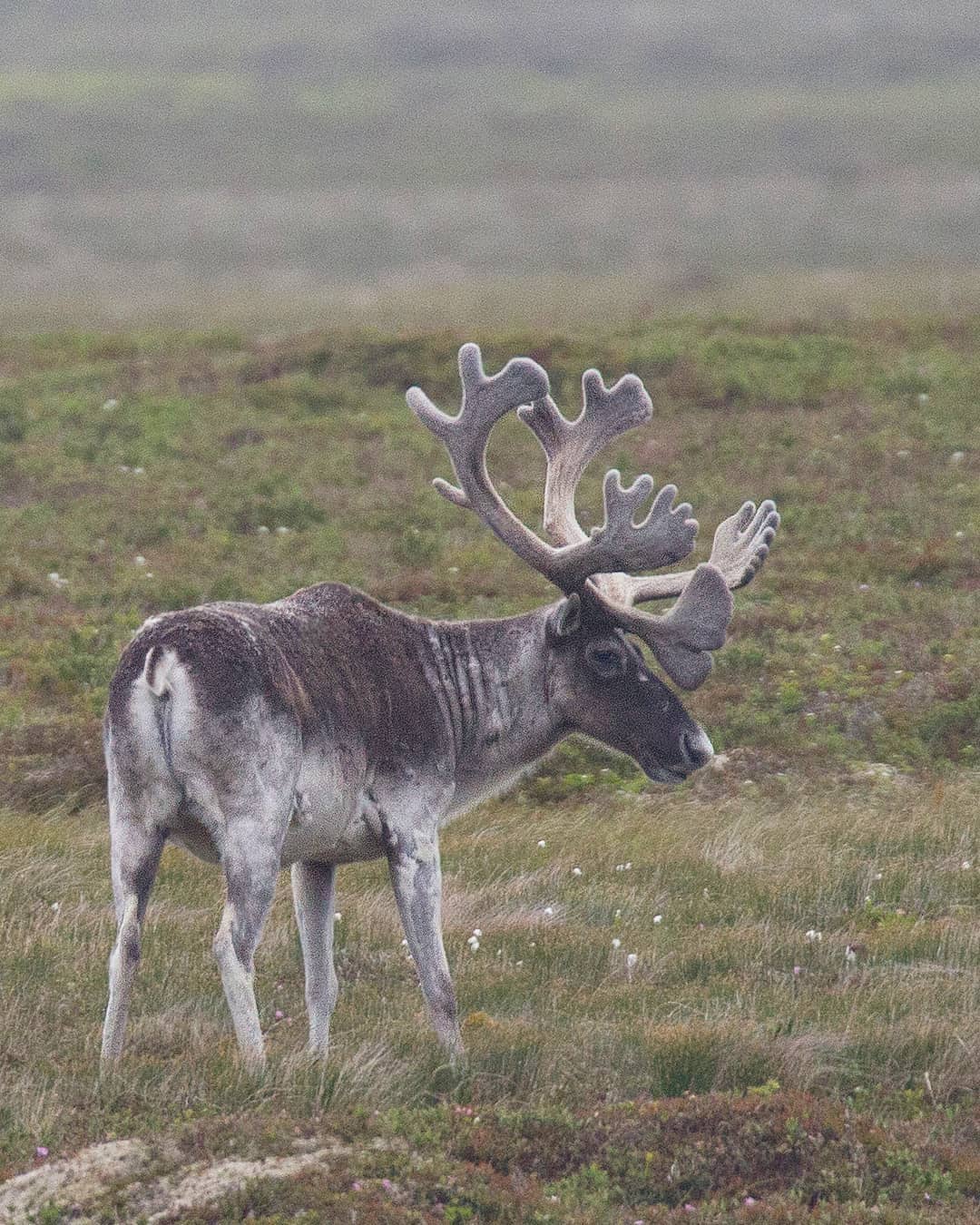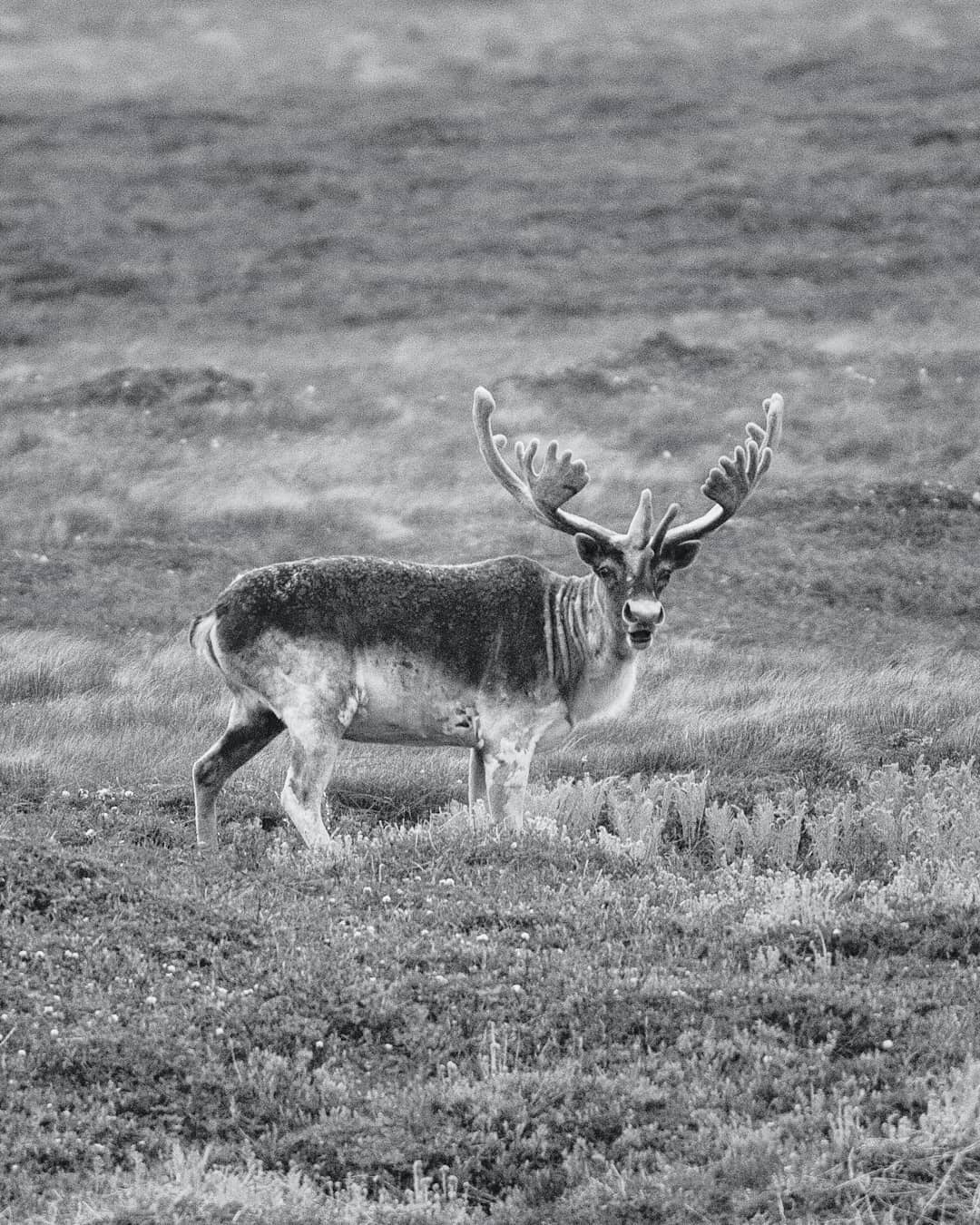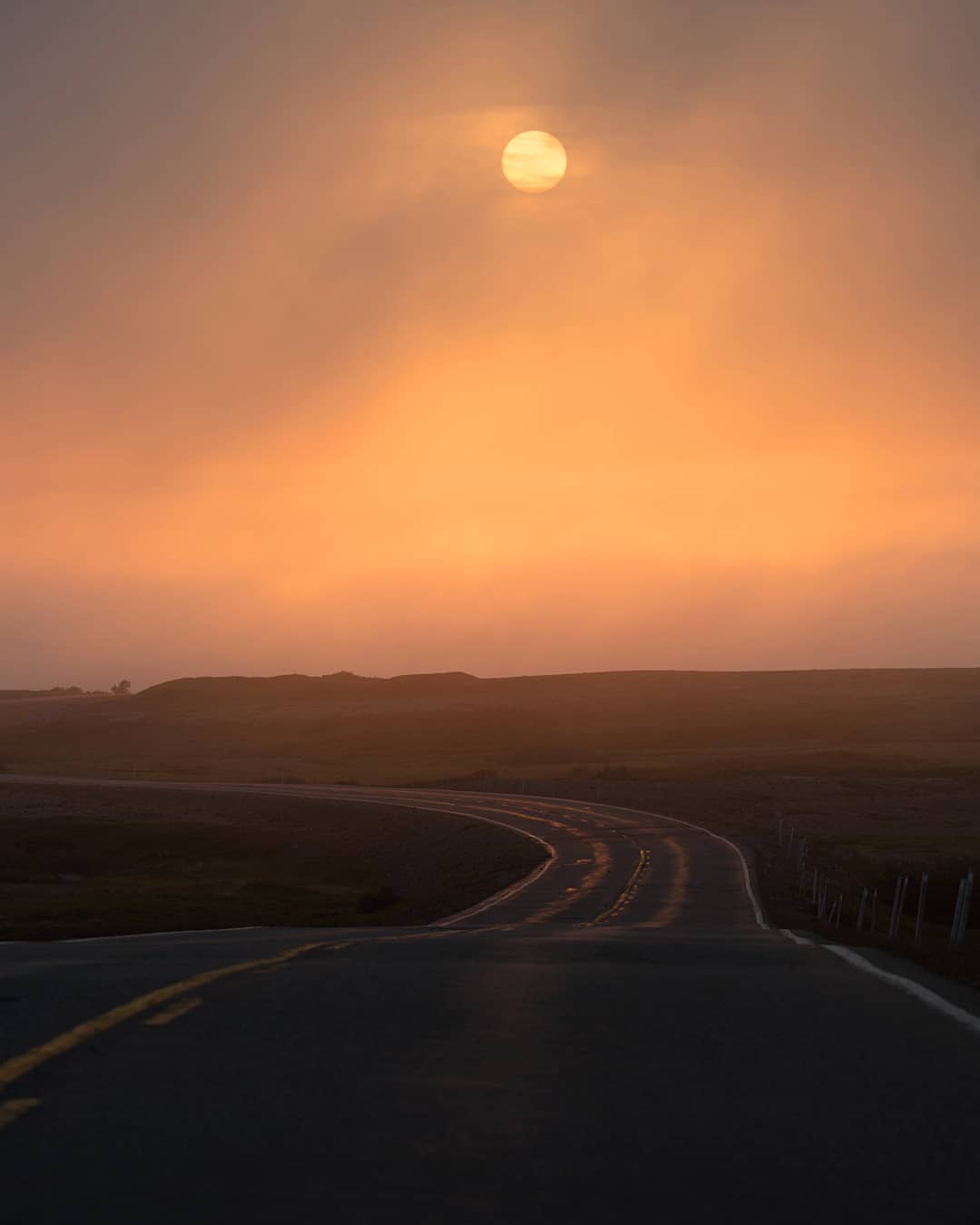During the whole east cost trip there was one animal I really really wanted to see more than any other: a caribou! These beautiful creatures are such a symbol of the wilderness to me, and seeing one in person has been a dream of mine for a long time.

After much research on the different herds found in Newfoundland, I decided that my best chance of spotting one would be around Gros Morne National Park. We had booked a private hike that would take us by speed boat into across the western brooke pond fjord, and than help us navigate our way through the unmarked wilderness. Unfortunately the forecast for that day ended up calling for heavy winds and rain which would have made it unsafe. We ended up spending the day driving through the park looking for caribou on our own. We went to an area that commonly had sightings from the road, but we found none. Later that week while at Cape St. Mary’s Ecological Reserve, I spoke to a biologist who was working there to see if he had heard of any caribou sightings in the area. He checked Facebook for a friend of his that manned a nearby lighthouse and would regularly post any wildlife sightings he came across. He saw a few caribou a week earlier. We got directions to the area and started a 3 hour late afternoon drive. When we got to the small stretch of road where the last sighting happened, we saw a car pulled over and a large animal at the side of the road! My heart was pounding, but as we got closer we saw it was a moose. We drove on and right as we were approaching the end of the road, I saw a sign and little parking lot, so I pulled over. The sign explained that there is a caribou herd in this area which is the southernmost herd in the world, and numbers a few thousand. I took out my telephoto lens and for fun did a scan of the area. I couldn’t believe my eyes when a caribou entered my viewfinder… and not just any caribou, a large bull with a beautiful rack of antlers! This post will document that encounter, along with what I have learned about these majestic creatures 🙂

After @elizabeth__bruno and I spotted this bull from the road, it still took a while to get within range of a decent photo. He was probably 1 or 2 km in from the road when we spotted him. The surrounding area was a beautiful flat subarctic tundra landscape. I had never seen anything quite like it before. Most of the ground was covered in a thick layer of spongy moss, which was dotted with delicate wildflowers. We slowly walked in his direction as inconspicuously as possible, never walking in a direct line towards him. We did this until we were about 500 meters away. At this point our shoes started to get quite wet, each step squeezed out a considerable amount of water from the mossy ground. Caribou have amazingly designed wide concave hoofs that allow them to walk in snow or soft ground, forage for ground vegetation, and are used as paddles while swimming in water. Male caribou have very impressive antlers that can grow to over a meter in length. Surprisingly female caribou can also grow antlers, although they tend to be much smaller and straighter. Adult bulls average 350-400 pounds with some recorded up to 700 pounds. Another interesting fact about caribou is that in Europe they are called reindeer, but they are the same species. In my next post I will talk about the conservation status of this animal, which unfortunately is not looking very good.
I saw a sign and little parking lot, so I pulled over. The sign explained that there is a caribou herd in this area which is the southernmost herd in the world, and numbers a few thousand. I took out my telephoto lens and for fun did a scan of the area. I couldn’t believe my eyes when a caribou entered my viewfinder…

There are different sub species of caribou: 1) Barren-ground caribou are found in northern Canada and Alaska). They are smaller than other caribou subspecies, but what they lack in size, they make up in numbers, with some herds containing over 100,000 individuals! 2) Woodland caribou are found throughout the boreal forests of Canada. They used to also be found in the lower 48 states in America, but sadly the last woodland caribou heard is down to just 3 individuals as of May 2018. 3) Mountain caribou tend to grow the heaviest antlers of the species, and as their name suggests are found in mountain environments of the west coast. These caribou are some of the most vulnerable, since their habitat is isolated. Deforestation, and urban development have lead to the creation of roads, and corridors of cut trees that allow unnatural easy access for predators. While overall caribou seem to be struggling to cope, there are some success stories, such as the porcupine caribou herd, in the north Yokon region. As of July 2018 the herd numbered over 200,000, nearly double what it was in 2001.

After photographing this lone caribou into late afternoon, we started to drive back to our AirBnB as the sun was setting. About 10 minutes into our drive, we experienced something I have never seen before: Fog literally rolling in. We saw it first on the horizon, and then it came closer to us, traveling low, over the hills. When it hit, it totally blocked the sun from view! We pulled over and I took a few shots out of my driver side window. It was a spectacular end to an amazing day. We had a bit of a frightening drive the rest of the way back, as the thick fog lingered after dark, and we started to get some rain. Visibility was low, and the very real possibility of a moose crossing kept us very alert, but we took our time driving back and thankfully that never happened 🙂


